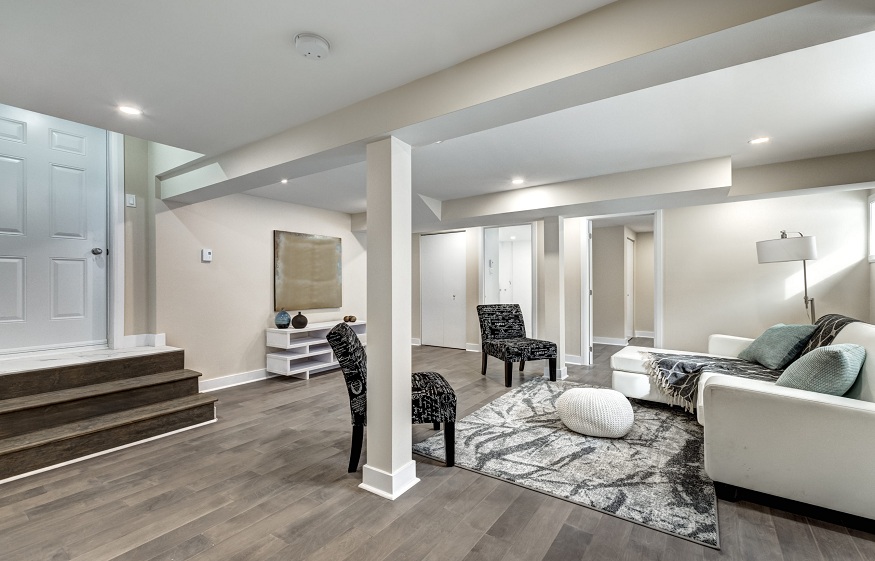The basement is a very particular room that turns out to be different from the rest of the rooms in a house since, although it can be used for storage or as a living space, it tends to be cold and damp. Two critical reasons you should think carefully about what type of flooring is the right one to install.
Here the goal is not simply to make the room look good but also to solve the problems of humidity and cold, especially if the idea is to make the basement another gathering area.
Basement Challenges
The fact that the basement is below ground level implies additional maintenance to the rest of the house since it is a space that remains exposed to the risk of flooding or, at least, water seepage and, therefore, to the easy growth and propagation of fungi and bacteria.
These factors must be taken into account when choosing the right floor, even when thinking about furniture, since it is essential to choose a floor that resists moisture, is durable and is aseptic so that the health of residents won’t be at risk. This way, you can make sure that the basement is a good room where you can hang out and where your children can play without a problem.
Best flooring options for basements
The good idea is to opt for flooring that dries quickly or repels moisture, such as vinyl, ceramic or stone tile. But, so that you know the properties and advantages of each option, here we share more details:
1. Epoxy-sealed concrete floor
Epoxy is one of the preferred materials when looking to repel moisture. However, it is a hard floor, which is very durable and cost-effective. Initially, an even concrete layer must be installed, and epoxy is applied on top of it, which can be presented in different colours and patterns.
Once this floor is installed, you will be able to forget about germs and not suffer from long cleaning routines, but as it is a cold floor, it will not contribute to improving the temperature of the environment.
2. Vinyl flooring
Floating vinyl flooring is a good idea, not only because of its easy click installation but also because – being floating – it allows you to create a “barrier” between the subfloor and the floor, solving the problem of humidity and, in addition, providing warmth. To the room and cushioning with every step.
The variety of formats, colours and patterns of vinyl floors is vast one of the favourites is the architectural LVT floors, which are installed with adhesive to the floor and have a very realistic appearance of marble or wood that will attract all attention. Glances can confuse anyone. It is like installing marble or wood but with more excellent resistance and at a lower cost.
Vinyl flooring is installed per tile and can be uninstalled individually without damaging the entire floor. In the event of a flood or something that happens to damage the floor, the installer will be able to remove the damaged tiles and install the new ones without a lot of construction work.
These floors are easy to install, but the work must be done by a professional so that the quality and finishes are perfect. In addition, they are cheap, aseptic, thermoacoustic, moisture-resistant, durable, scratch-resistant and excellent-looking floors.
3. Ceramic tiles
Ceramics is one of the most common choices regarding basement flooring. It is a durable, water-resistant floor that, if installed correctly and is a good quality tile, can maintain a good appearance for years.
The tiles have a surface layer known as “glazing” that prevents water from filtering through the pores of the ceramic, at least until this protective layer deteriorates. However, they are cold and will not help to improve the temperature of the environment in a basement.
4. Rubber tiles
If you plan to use the basement as a gym or a space for your children, you can consider tile or rubber sheet flooring, as they are shock resistant, waterproof and can be installed with colour designs or in different patterns.
If the basement is a gym, you can install thick, semi-rigid rubber flooring so that falling weights won’t affect the subfloor. Still, if the space is for children or babies, you can opt for soft rubber tiles to make crawling and walking easier—more than comfortable for them.

